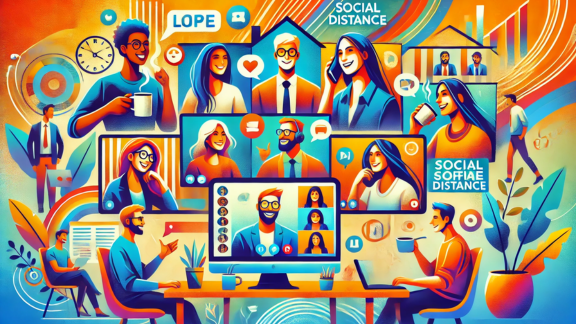
Chapter 2
Connectedness
“Perhaps the secret of living well is not in having all the answers but in pursuing unanswerable questions in good company.”
– Rachel Naomi Remen



Manage social distance
Build a shared identity by encouraging team members to share personal stories and experiences.
Schedule regular check-ins and virtual coffee breaks to keep everyone engaged and connected.






Leverage collaborative technologies
Use interactive tools which combine video conferencing with interactive whiteboards, allowing team members to collaborate visually and in real-time.
Facilitate visual cues by ensuring your collaboration tools support seeing gestures and facial expressions to enhance understanding and connection.






Strategically use distance
Schedule virtual team-building activities that focus on team bonding and emotional connections.
Encourage the use of personalized avatars or profiles in communication tools to help team members maintain a sense of identity.






Optimize virtual meetings
Create a virtual team culture by developing clear communication guidelines and virtual meeting protocols to ensure everyone is on the same page.
Implement best practices for interaction:
- Use agenda-driven meetings
- Assign roles (like facilitator and note-taker)
- Use breakout rooms for small group discussions






Enhance cognitive synchronization
Implement design intermediary objects (DIOs) such as shared documents, mind maps, or project management boards (e.g., Trello, Asana) that represent shared goals and ideas.
Use these tools to maintain cognitive synchronization and ensure all team members are aligned on project objectives and methods.






Feel free to share with your colleagues
Give feedback, ask questions or request new resources


